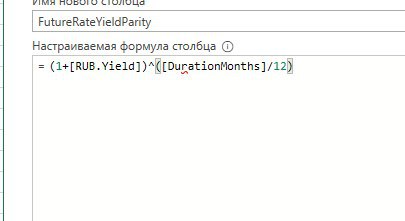СК
Size: a a a
2020 September 06
даже когда убирал sum и оставлял только [debt] - выдавало ошибку.
Попробуйте для передачи контекста строки обернуть в первоначальной формуле sum в calculate.
KK
Подобная структура позволяет сделать более наглядно, легко читаемая, понятно пошагово. Это если без подробного разбора! :)
Там шага всего два) Но спасибо за комментарий.
VP
да, так работает, спасибо.
но все же очень любопытно, почему в rankx нельзя обратиться к столбцу, а в sumx можно.
но все же очень любопытно, почему в rankx нельзя обратиться к столбцу, а в sumx можно.
Нужно debt в calculate. Обернуть
SS
Попробуйте для передачи контекста строки обернуть в первоначальной формуле sum в calculate.
это тоже делал, с самого начала, потом уже просто выкидывал лишнее.
SS
коллеги, проблема же не в том, что считает не правильно. а проблема в том что код просто не компилируется.
VP
Vasily Prozorov
Нужно debt в calculate. Обернуть
Возможно несколько раз
SS
т.е. если в самом начале стоит rankx - то мера просто не компилируется. если заменить на sumx - все начинает работать.
SS
в итоге совет @Sergey_k_8 помог, просто убрал обращение к столбцу.
ID

Подскажите а степень в М также как в экселе пишется? Что-то мне кажется что в ней ошибка
SS
Ivan Deryabin

Подскажите а степень в М также как в экселе пишется? Что-то мне кажется что в ней ошибка
1
в итоге совет @Sergey_k_8 помог, просто убрал обращение к столбцу.
Вас не смущает, что rankx вторым параметром принимает выражения, а не столбцы?
СК
т.е. если в самом начале стоит rankx - то мера просто не компилируется. если заменить на sumx - все начинает работать.
Ответ связан с функцией RANKX. Второй параметр этой функции рассчитывается в исходном контексте вычисления, а уж потом определяется порядок этого значения в виртуальной таблице с ADDCOLUMNS. В исходном контексте вычисления нет виртуальных столбцов.
SS
Вас не смущает, что rankx вторым параметром принимает выражения, а не столбцы?
не смущало. контекст строки передается, функция итеративная, поэтому считал что должно работать 🙂
1
не смущало. контекст строки передается, функция итеративная, поэтому считал что должно работать 🙂
причём тут контекст строки?
СК
Вас не смущает, что rankx вторым параметром принимает выражения, а не столбцы?
И выражение должно быть из реальных столбцов модели.
SS
спасибо коллеги! как всегда подсказали 🙂
СК
Точнее так, выражение во втором параметре RANKX должно рассчитываться без помощи первого аргумента. А в примере оно зависит
1
И выражение должно быть из реальных столбцов модели.
How RANKX works
The syntax for RANKX is as follows:
RANKX(<table>, <expression>[, <value>[, <order>[, <ties>]]])
<table>
The first parameter <table> needs to be a DAX table. This can be a physical table, or it can be the output of a DAX function that returns a table. Like any of the X functions (SUMX, MINX, MAXX etc), the table that gets passed here controls the number of loops, or iterations performed by the RANKX function. If we pass our sample 10-row dataset to the function, the code inside the RANKX function will loop 10 times (once for each row in the table). The smallest number that could be generated is a 1, while the largest value that could be returned is a 10. If we used a function to summarize the physical table, say to the distinct values of the Category column, the RANKX function will logically perform three loops.
The syntax for RANKX is as follows:
RANKX(<table>, <expression>[, <value>[, <order>[, <ties>]]])
<table>
The first parameter <table> needs to be a DAX table. This can be a physical table, or it can be the output of a DAX function that returns a table. Like any of the X functions (SUMX, MINX, MAXX etc), the table that gets passed here controls the number of loops, or iterations performed by the RANKX function. If we pass our sample 10-row dataset to the function, the code inside the RANKX function will loop 10 times (once for each row in the table). The smallest number that could be generated is a 1, while the largest value that could be returned is a 10. If we used a function to summarize the physical table, say to the distinct values of the Category column, the RANKX function will logically perform three loops.



